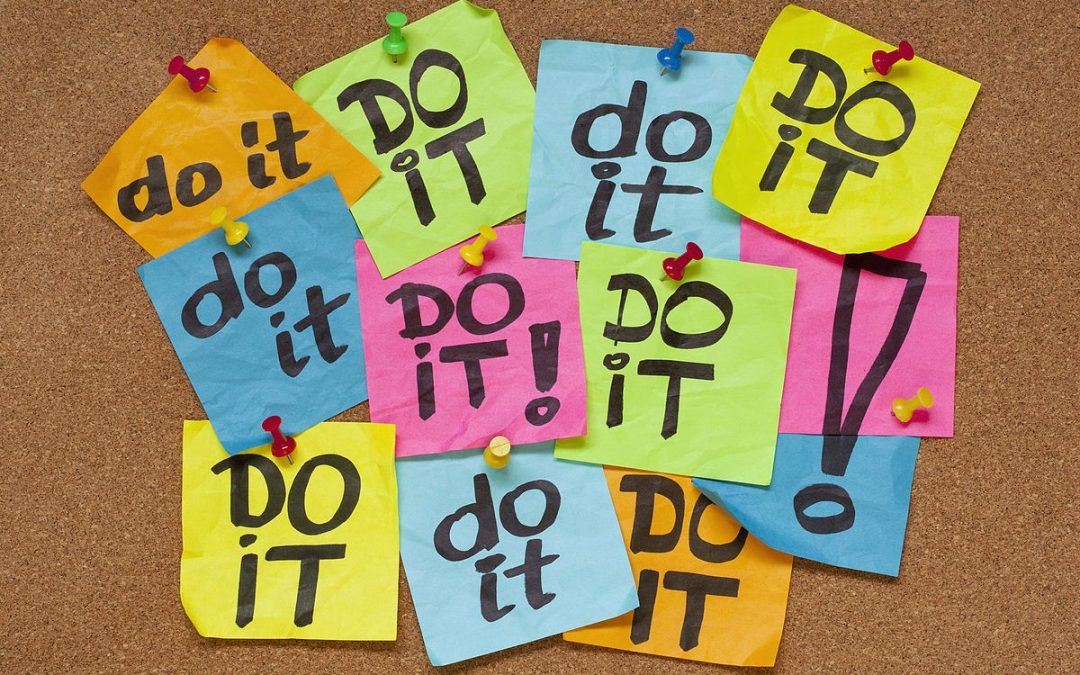Among the struggles many adults and children deal with, procrastination is often among the top sources of frustration. And understandably so for most. It is the cause of stress, poor performance, lost sleep and thwarted life satisfaction.
For many, this can change with a bit of adjustment in self-management. For some, the role of brain dysregulation is overwhelming, and other tools are needed, such as Neurofeedback and Heart Rate Variability training to reduce the activation levels in the brain. This is not true for most, however.
Why and How We Procrastinate?
Before we can un-procrastinate, we might notice why and how we procrastinate so easily and naturally. In a nutshell, procrastination is ALL about what is most compelling to choose at the moment. That is the moment that is right in front of me.
So if there is a project, a homework assignment, or even a phone call, we can imagine sitting at that moment. Next is a brief pause, perhaps, with a rapid appraisal of what to do next. Procrastination arises when we seek what is most immediately compelling, and usually, this is mostly a choice for the more anxiety-relieving – not that which is goal-attaining.
Why would we choose what is anxiety relieving first? Because that is what the un-disciplined mind does almost every second of the day! We choose what is easy, what feels good, and what gives some immediate sense of satisfaction.
The ‘thing procrastinated’ brings the opposite: an immediate sense of angst or dread; thus, we reach for relief instead and find something else to do. This reaching for comfort or the good feeling is not bad if we learn how to manage it.
The Cure for Procrastination
What is the difference between the disciplined mind and the undisciplined mind as it relates to procrastination?
In my view, the essential distinction is that the disciplined mind has prepared in advance for such moments by changing the scope of these critical moments. What do I mean? I am referencing the width or time span considered during that moment of ‘what’s next?’ The disciplined mind quickly realizes that putting off that project or assignment will predictably bring much more angst and lack of satisfaction tomorrow if I put it off today. They have automated that process of appreciating what will bring more enjoyment and ease to their lives over the long term.
What do most of us do to relieve our stress at the end of the day? Do we exercise, meditate, breathe, or walk in nature? All of these are anxiety relieving, of course! But what we choose instead is most often a cocktail, vaping, THC, medication, or sitting in front of the TV or phone. These are all coping methods that bring immediate relief rather than genuine satisfaction.
Why? Why? Why?
Most of you might be wondering how to discipline an undisciplined mind. Because if we can do that, then procrastination dissipates.
Well, nothing is a complete answer to that question. However, there is a powerful concept that is both simple and elegant in building up the disciplined thought that ensures that the work gets done – not procrastinated!
As we launch into this discussion, remember that the ‘get it done’ person has practiced getting it done many times, and thus little time is spent preparing for the moments. They have disciplined their mind already. So what we have to do is re-train our brains to accomplish this. It takes a bit of practice, so be prepared.
Step 1: Always Anticipate Your Vulnerable Moments of Procrastination
By knowing where you are weak and tending to procrastinate, be prepared by thinking of these in advance. You will need perhaps five minutes with a journal or piece of paper to write down this process. Plan to be the ‘get it done’ person in your life!
Step 2: From Now On, ‘I Get It Done.’
Start mentally changing your thought process. Abandon any story, beliefs, or interest in past habits and make procrastination irrelevant to your future. You do this by jumping into this process with both feet and never looking back.
Instead, begin your journal with the statement, ‘I get things done. That’s what I do! I get it done when I want to do it.’ As you write this down, also speak it out loud. Start to make it real through repetition and rehearsal. Start to envision yourself as the person who gets things done WHEN you want to do it!
Step 3: Why Do It … When You Want to Do It?
Getting to the WHY is critical. Why do this today? If you can’t understand that YOU WANT to do this project at a time that fits into the big picture of life, then all will be lost. In other words, if you have decided that you don’t want to do the project, then it makes sense that your brain will choose the easeful path and put it off. Right? Procrastination is just logical.
Instead, we want to write down the WHY for completing this project or assignment today. Why do it now? What’s the benefit to me, my mental health, my family, and maybe my future? Even if the project is required for your work or school, and you are thinking, ‘I don’t want to do this,’ then you are in trouble. We must get our motivation, thoughts, and habits together to move in unison with life and get things done on time.
This means that we realize that any project or assignment has a much larger scope, and we are (in advance) preparing for the moment of decision by changing how we feel about the project. We must get to the point where we WANT to get it done. To master this, we clarify our thoughts on paper to explore all the reasons ‘why’ we want to do something and why getting it done sooner than later is good for me and my life.
Step 4: Plan Specifically When to Get It Done!
The last step is simple: Put it in your calendar and map it out. Please don’t leave it up to your feeling state at the moment. Make it so real that you can imagine completion at a specific point with your imagined celebration.
When you pull these practices together and journal regularly, understanding the power of why you want to do something, you take charge of your thoughts, your motivation, and ultimately your destiny. You can find more articles on neurofeedback, peak performance, and forward-focused technologies at CapitalDistrictNeurofeedback.com.






